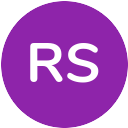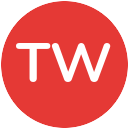Exploring Alternatives: A List of Similar Websites to Bubble
By Gregor K. published about 2023-01-12 09:04:05
Are you looking for an alternative to Bubble, the popular website-building application? Look no further! We have compiled a list of websites like Bubble that offer similar features and capabilities. From drag-and-drop editors to custom coding, these sites have something to offer for everyone. Whether you're a novice coder or a web development expert, you'll find something to suit your needs. So get ready to explore the world of website development - these websites like Bubble will take your projects to the next level.
Bubble
Bubble is a powerful no-code development platform enabling anyone to build and launch web and mobile applications without writing code. With Bubble, you can create a fully functional web application with a few clicks and drag-and-drop interface.
Features
- Create web and mobile apps without coding
- Drag-and-drop interface
- Real-time collaboration with teammates
- Customizable design templates
- Robust API integration
Table of Contents
- 1Introduction
- 2Bubble Alternatives
-
3Head-to-Head Comparisons
- 3.1Bubble vs Adalo
- 3.2Bubble vs Airtable
- 3.3Bubble vs Backendless
- 3.4Bubble vs Celsius
- 3.5Bubble vs Carrd
- 3.6Bubble vs Caspio
- 3.7Bubble vs Django
- 3.8Bubble vs Duolingo
- 3.9Bubble vs Etsy
- 3.10Bubble vs Figma
- 3.11Bubble vs Glide
- 3.12Bubble vs Webflow
- 3.13Bubble vs WordPress
- 3.14Bubble vs PowerApps
- 3.15Bubble vs Loom
- 3.16Bubble vs OutSystems
- 3.17Bubble vs PINK
- 3.18Bubble vs Squarespace
- 3.19Bubble vs Shopify
- 3.20Bubble vs Salesforce
- 4Bubble History
- 5Bubble Status
- 6Comments
- 7Further Links
Bubble Alternatives
Appy Pie
Both platforms allow users to create mobile and web applications without coding.
Appy Pie has a more comprehensive range of features than Bubble.
GameSalad
Both platforms offer drag-and-drop design tools for app creation.
GameSalad is focused on game development, while Bubble provides tools for building many types of applications.
AppMakr
Both platforms enable users to build apps without coding.
AppMakr has an array of features for customizing and monetizing apps, while Bubble focuses on the development process.
GoodBarber
Both platforms provide tools for creating mobile and web apps without coding.
GoodBarber has a more expansive selection of templates, while Bubble focuses on customizing and building apps from scratch.
Mobincube
Both platforms offer a range of tools for creating mobile and web apps without coding.
Mobincube provides an array of monetization options, while Bubble focuses on the development process.
Appery
Both platforms provide a selection of tools for creating mobile and web apps without coding.
Appery offers a more comprehensive range of features than Bubble.
Como
Both platforms provide drag-and-drop tools for building mobile and web apps.
Como offers a variety of monetization options, while Bubble focuses on the development process.
Adalo
Both Bubble and Adalo offer website building tools to create custom websites.
Bubble is a visual programming language while Adalo provides users with an easy to use drag-and-drop editor.
Airtable
Both Bubble and Airtable are web-based tools for building applications.
Bubble is a coding-based platform, while Airtable is a no-code database tool.
Backendless
Both websites provide cloud-based application development platforms.
Bubble provides a visual programming interface while Backendless offers a backend-as-a-service solution.
Celsius
Both Bubble and Celsius are online platform websites.
Bubble is a website development platform while Celsius is a cryptocurrency wallet.
Carrd
Both Bubble and Carrd are website building tools that enable users to create custom websites without the need for coding knowledge.
Bubble is a more powerful website builder, allowing for complex data structures and logic, while Carrd is a simpler drag and drop platform for quickly creating one-page websites.
Caspio
Both Bubble and Caspio are platforms that allow users to create web applications without coding.
Bubble offers a drag-and-drop builder while Caspio provides database management tools.
Django
Both Bubble and Django are web-development frameworks.
Bubble is a visual programming language, while Django is written in Python.
Bubble Head-To-Head
Welcome to our head-to-head comparison of Bubble, the top website building platform! Though there are a plethora of website building options available on the market, Bubble stands out due to its ability to create custom applications with both front and back end code. In this comparison, we will be looking at Bubble in relation to other popular website builders in terms of features, ease-of-use, and cost. We hope this guide helps you make an informed decision when choosing the best option for your project.
Bubble and Adalo are both user-friendly website building platforms used to create websites without the need for coding. Bubble is a no-code platform that allows users to create custom web applications, while Adalo focuses on creating mobile apps with a drag-and-drop interface. Both platforms offer easy visual design tools, allowing users to build an app visually without writing code. Bubble provides a wide range of features such as data modeling, database storage, logic processing, integration with third party APIs, and automated testing. Adalo allows users to build an app without coding using its simple drag-and-drop interface and offers features such as customizing user interfaces and adding animations. Bubble allows users to customize their own backend language and connect their site to different third party services. On the other hand, Adalo does not offer a custom language but provides more than 300 components that can be dragged and dropped onto the page for easy creation of apps. Both Bubble and Adalo allow users to publish their finished sites directly from the platform.
Bubble and Airtable are two user-friendly tools for creating websites and databases. Both tools provide a way to quickly create a website from scratch or from pre-made templates and link it with a database. Bubble is an online platform for building web applications without code. It enables users to create interactive sites and apps by dragging and dropping elements onto the page, as well as adding custom logic through code. Bubble also has features such as drag-and-drop forms, powerful data validation, and reusable components. Airtable is a cloud-based platform that allows users to store, manage, and share data in an organized way. It combines the features of a spreadsheet with traditional database management capabilities. Airtable offers an array of features like sharing capabilities, integration with other apps, advanced search functions, collaboration tools, and powerful automation options. In addition, Airtable gives users the option to customize their views using different layouts or formats like Kanban boards or calendars. Overall, Bubble provides an easy way for users to create interactive websites with custom logic while Airtable provides more powerful database management capabilities including advanced search functions, collaboration tools, and automation options.
Bubble and Backendless are both web development platforms that allow users to create powerful applications without needing to write code. Bubble offers a visual programming interface, which enables users to drag-and-drop elements and customize the logic behind their application. Additionally, Bubble provides users with access to various analytics tools and database management systems. Backendless also offers a visual programming interface as well as an extensive API library for developers to integrate third-party services into their applications. Both platforms offer hosting services for user applications and support various languages such as JavaScript and React Native. Furthermore, Backendless includes a real-time database feature that allows developers to store data in the cloud and synchronize it across multiple devices in real time. Ultimately, both Bubble and Backendless enable users to develop complex web applications quickly and easily.
Bubble and Celsius are two websites that provide users with the ability to create their own web applications. Bubble is a visual programming platform, allowing users to design and develop web applications without writing any code. Celsius is an open source platform that provides users with access to development tools, such as text editors, databases, and libraries, enabling them to create custom web applications. Bubble offers a wide selection of pre-built elements for creating custom user interfaces and workflows while Celsius focuses on providing developers with the tools they need to create fully customizable applications. Bubble also enables users to easily manage multiple projects in one place, while Celsius offers more control over the development process including version control and continuous integration options. Both platforms have drag-and-drop interface builders but Bubbleâs has a more intuitive user experience compared to Celsiusâs more technical approach. Additionally, Bubble also provides features for data management and hosting whereas Celsius does not offer these services.
Bubble and Carrd are both powerful website building platforms that allow users to create beautiful, full-featured sites in minutes. With Bubble, users can build web and mobile applications without having to write code. Bubble offers drag and drop tools, a visual editor and custom integrations. Carrd is simpler but more affordable than Bubble. It has a selection of basic ready-made templates as well as the ability to create responsive single page sites with features like custom domains, analytics and password protection. Both platforms offer an intuitive interface and many customization options, allowing users to create unique sites quickly and easily.
Bubble and Caspio are both low-code development platforms that allow users to create web applications without needing to code. Bubble is a visual programming platform, enabling developers to quickly create functional user interfaces with drag-and-drop elements. It allows users to set up complex data models and makes it easy to integrate third-party APIs. Meanwhile, Caspio is a cloud-based platform that provides point-and-click functionality for creating database applications. It offers an extensive library of pre-built components for quick app creation, as well as powerful tools for data analysis and reporting. Both platforms offer features such as user management, secure hosting, mobile optimization, and more; however, their primary use cases differ significantly. Bubble is ideal for building prototypes or MVPs while Caspio is a better fit for enterprise or larger projects due to its advanced data collection capabilities and scalability.
Bubble and Django are both platforms that provide web development tools for creating websites. Bubble is an online platform that allows users to create visual and interactive websites without writing a single line of code. It also provides a drag-and-drop interface so users can easily customize the look and feel of their website. Django is an open source Python framework used to build and manage websites using the Model View Controller architecture. It offers built-in features such as object-relational mapper, template engine, URL routing system, and authentication system. Bubble's visual editor makes it easy to design websites quickly while Django is ideal for more complex projects with its extensive feature set. Both offer scalability, but Bubble is better suited for simple projects while Django works best for larger ones.
Bubble and Duolingo are both online platforms that allow users to build and launch applications. Bubble is an all-in-one platform for creating, launching, and managing web applications, while Duolingo is a language learning platform that provides instruction in over 30 languages. Bubble offers more than 20 programming languages for users to work with, including HTML5, CSS3, JavaScript, PHP, Python and Ruby on Rails. It also provides tools allowing users to connect databases, APIs and other services to their application. Additionally, Bubble features drag-and-drop functionality that simplifies the development process. Duolingo offers instruction in a wide range of languages with interactive lessons designed by professional linguists. Its course content covers topics such as conversation practice and grammar basics, as well as reading and listening comprehension exercises. It also utilizes adaptive learning technology which helps tailor lesson plans depending on the user's progress throughout the course. Overall, both Bubble and Duolingo provide unique services to their users; Bubble provides robust web application building tools while Duolingo offers comprehensive language learning courses.
Bubble and Etsy are both online marketplaces that enable users to create and run their own businesses. Bubble is a website building platform that allows anyone to create powerful web applications without needing to write any code, while Etsy is an e-commerce platform for handmade, vintage, and custom items. Bubble offers a wide range of features including easy drag-and-drop page building tools, visual coding language, integrated hosting, payment processing, and more. Etsy provides a central marketplace where sellers can list their products, manage orders and shipments, interact with customers through reviews and messages, and access helpful analytics regarding the performance of their store. Both platforms offer powerful ways to build an online business on the web but differ in the way they approach it - Bubble enables users to build fully customized websites from scratch with no coding required whereas Etsy provides an established platform for selling handmade items.
Bubble and Figma are both web-based tools used to create interactive applications and digital designs. While they share similar features, such as drag-and-drop elements, online collaboration, and the ability to export code for web use, there are some distinct differences between them. Bubble focuses on creating interactive web applications with a focus on no-code and low-code development. The platform allows users to build with components like forms, charts, API calls, databases, and more. It also offers features like automatic code generation for popular programming languages like JavaScript and Python. Figma is a more comprehensive design tool that focuses on design systems for websites and apps. It enables users to collaborate in real time by allowing multiple people to edit the same document simultaneously. In addition to its drag-and-drop elements, Figma also has an array of powerful tools like Design System Manager, Auto Layout Resizing, Fonts Library Syncing, Component States Management and more which makes it ideal for creating complex visual designs.
Bubble and Glide are both powerful no-code web development platforms used to create applications and websites. Bubble offers an intuitive drag-and-drop interface for quickly building complex applications, while Glide provides a straightforward layout specifically designed for creating mobile apps without code. With Bubble, users can use visual programming and custom logic with their application building, while Glide focuses on creating easy-to-use mobile apps with minimal effort. Both Bubble and Glide offer backend databases and secure hosting options, but Bubble additionally provides the ability to connect to 3rd party APIs. Additionally, users of both platforms benefit from access to helpful resources such as documentation, tutorials, forums, video lessons, and more.
Bubble and Webflow are both web development tools that allow users to create custom websites without having to write code. While both platforms provide drag-and-drop interfaces, they offer different features to serve a variety of user needs. Bubble is best suited for users who need a wide range of features, such as custom logic and APIs, and those looking for complex applications. It offers an extensive library of components and elements, allowing users to create multi-page layouts with data models and workflows. It also provides a visual programming language which allows users to create complex interactions between pages easily. Webflow is designed for those who want a fast, simple way to build websites with minimal effort. The platform offers an expansive collection of templates and pre-built elements that can be customized quickly. Its interface allows for easy creation of high-quality design elements, including responsive layouts for different devices, animation effects, and interactive components like forms and menus. Additionally, it includes hosting capabilities through its CMS platform so users can publish their website quickly and effortlessly.
Bubble and WordPress are two popular website-building platforms, but they take different approaches to creating user experiences. Bubble is a no-code platform that enables users to create complex web applications without writing any code, while WordPress is primarily a content management system (CMS) for creating blog posts and websites. Bubble offers an array of features for designing custom web apps including a visual programming language that allows users to create interactive, data-driven web experiences and powerful search and workflow tools for automating processes. It also provides hosting and deployment services, as well as templates for quickly launching projects. WordPress on the other hand has many features for creating content-focused websites such as themes, plugins, built-in SEO capabilities, media library integration and advanced editing tools. It also allows users to customize their sites using HTML/CSS or install third-party plugins. Furthermore, WordPress offers automated backup solutions and excellent customer support.
Bubble and PowerApps are both powerful and easy-to-use platforms for creating web applications without coding. Bubble offers a visual development tool that enables users to design, develop, and launch web applications with drag-and-drop elements while PowerApps provides a low-code platform that allows users to quickly create custom business applications with point-and-click tools. Both platforms provide a wide range of features including data storage, API integration, user authentication, and more. Bubble also offers an extensive library of plugins to extend the functionality of the platform while PowerApps allows users to leverage existing templates to reduce development time. Additionally, Bubble allows developers to code in JavaScript or CoffeeScript if they wish while PowerApps supports custom coding in languages like C# and Visual Basic. Ultimately, both platforms offer powerful app building capabilities with different approaches that can be tailored to fit user needs.
Bubble and Loom are both website building platforms that enable users to create websites with no coding knowledge required. Both services provide a drag-and-drop editor for customizing layouts, styling, and content. Additionally, Bubble provides a wide range of tools to help users create their own web applications from scratch, while Loom focuses more on giving users the ability to customize existing templates. When it comes to design elements, Bubble offers a wide range of options for users to customize their sites with custom fonts, colors, images and more. On the other hand, Loom has limited customization capabilities but is designed with mobile devices in mind; all sites created using Loom are automatically optimized for mobile devices. In terms of features and functionality, Bubble offers a number of powerful features such as an API explorer to access external data sources and an AI assistant to build forms. Meanwhile, Loom has features like integrated analytics and SEO optimization tools. To sum it up, Bubble is better suited for those looking to build complex applications from scratch while Loom is a great option if you want to quickly get your website up and running with minimal effort.
Bubble and OutSystems are both platforms for building web applications. Both provide a simple drag-and-drop interface and user friendly design options, making them ideal for creating custom applications with no coding experience necessary. OutSystems provides more advanced features than Bubble, such as machine learning capabilities, automation, and integration with existing systems. It also offers mobile development tools and an extensive library of built-in components to build complex applications quickly. Bubble, on the other hand, is focused mainly on web development and provides a wide range of templates that users can customize based on their needs. Both platforms offer hosting and support services to help users deploy their applications quickly and easily. Additionally, both allow users to place their own ads in the application or monetize with subscriptions. In summary, Bubble is great for creating simple web apps without needing any coding experience while OutSystems is better suited for building complex applications with more advanced features such as machine learning and automation.
Bubble and PINK are both user-friendly website building platforms for creating apps. Bubble is a no-code platform that allows users to quickly create web applications with a drag-and-drop interface, while PINK provides a powerful code editor for coding apps with React, Node.js and GraphQL. Both platforms offer comprehensive features to help users build their websites, including hosting, analytics and database tools. Bubble offers an extensive library of premade components, making it easy to create complex websites from scratch, whereas PINK allows developers to customize their websites more easily by providing the flexibility of coding languages. They both offer robust customer support and documentation resources to help users build the best websites possible.
Bubble and Squarespace are both website-building platforms that give users the ability to create functional, well-designed websites quickly and easily. Bubble provides an all-in-one platform for building a web application by offering a visual programming language, while Squarespace offers a suite of features to help users create a website with a simple drag-and-drop editor. Both offer user-friendly features such as prebuilt themes and templates, custom domain names, and integration with third-party services. However, Bubble allows users to build custom backends for their web applications, while Squarespace has limited backend capabilities. Additionally, Bubble is ideal for developers looking for complete control over their projects, whereas Squarespace is better suited for those who want an easy way to build a basic website without having to learn coding or other complicated web development skills.
Bubble and Shopify are two popular website building platforms that offer users various tools to create their own websites. Both services provide templates, customization options, hosting, and domain names for businesses, entrepreneurs, and individuals. The main difference between Bubble and Shopify is the type of user experience they provide. Bubble is a no-code platform that allows users to build custom web applications with a drag-and-drop interface. It also supports data storage and powerful logic operations through its built-in programming language blocks. Shopify is an ecommerce platform that provides users with templates to create online stores and manage payments, inventory, shipping, customer accounts, and other store operations. Both platforms come with a wide range of features designed to make it easy for users to build professional websites quickly. Bubble's interactive visual designer makes building complex sites simpler than ever before while Shopify's intuitive user interface helps users customize their store easily. Additionally, both platforms enable users to add custom code via HTML/CSS or JavaScript when needed. Overall, Bubble and Shopify have many similarities as well as differences in terms of the type of user experience they provide. Depending on users' needs and preferences either one could be a great choice for building a website.
Bubble and Salesforce are both websites that offer powerful online tools to help businesses grow. Both platforms provide services such as custom applications development, data management, customer relationship management, and cloud computing. Bubble is focused on providing users with a comprehensive suite of tools for creating custom applications quickly and easily. It offers an intuitive drag-and-drop interface that enables users to create sophisticated web apps without needing to know how to code. Bubble also provides advanced features such as data visualization, analytics, and user authentication. Salesforce is a more enterprise-level solution for businesses looking for a comprehensive suite of services for managing customer relationships, marketing campaigns, analytics, sales pipelines, and more. Salesforce offers a wide range of features designed to help businesses scale up their operations efficiently. It also provides access to powerful analytics tools and machine learning capabilities to help users make better business decisions. Overall, both Bubble and Salesforce provide robust solutions for different types of businesses. While Bubble offers an easy way for non-technical users to build custom applications quickly without needing any coding knowledge, Salesforce is geared towards larger companies that need access to complex tools for managing customers and other aspects of their operations.
History of Bubble
Bubble is an online platform that enables users to create web applications without having to write any code. It was founded in 2012 and has since grown into a popular platform for individuals and businesses to create web applications for various purposes. The platform offers drag-and-drop tools as well as a powerful API, making it easy for users to create and deploy web applications quickly. Bubble is now used by millions of users around the world.
Bubble Status
The Bubble website on online and reachable (last checked on 2024-04-25 01:00:10).
Comments
-

Wow, looks like I'm going to have to seriously up my Bubble game if I want to compete with these!
2023-02-09 10:30:19 · -

-

-

-

-

-

I'm sure if you put all these Bubbles together, you'd have a really great bubble bath!
2024-04-24 21:12:59 ·
Further Links
Trending Sites
Top Sites in Social Media
Top Sites in Online Chatting
Bubble
Bubble is a powerful no-code development platform enabling anyone to build and launch web and mobile applications without writing code. With Bubble, you can create a fully functional web application with a few clicks and drag-and-drop interface.
Features
- Create web and mobile apps without coding
- Drag-and-drop interface
- Real-time collaboration with teammates
- Customizable design templates
- Robust API integration
Table of Contents
- 1Introduction
- 2Bubble Alternatives
-
3Head-to-Head Comparisons
- 3.1Bubble vs Adalo
- 3.2Bubble vs Airtable
- 3.3Bubble vs Backendless
- 3.4Bubble vs Celsius
- 3.5Bubble vs Carrd
- 3.6Bubble vs Caspio
- 3.7Bubble vs Django
- 3.8Bubble vs Duolingo
- 3.9Bubble vs Etsy
- 3.10Bubble vs Figma
- 3.11Bubble vs Glide
- 3.12Bubble vs Webflow
- 3.13Bubble vs WordPress
- 3.14Bubble vs PowerApps
- 3.15Bubble vs Loom
- 3.16Bubble vs OutSystems
- 3.17Bubble vs PINK
- 3.18Bubble vs Squarespace
- 3.19Bubble vs Shopify
- 3.20Bubble vs Salesforce
- 4Bubble History
- 5Bubble Status
- 6Comments
- 7Further Links
